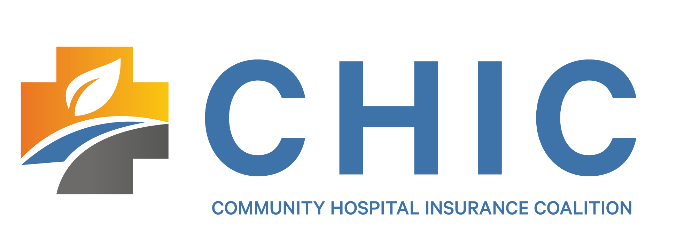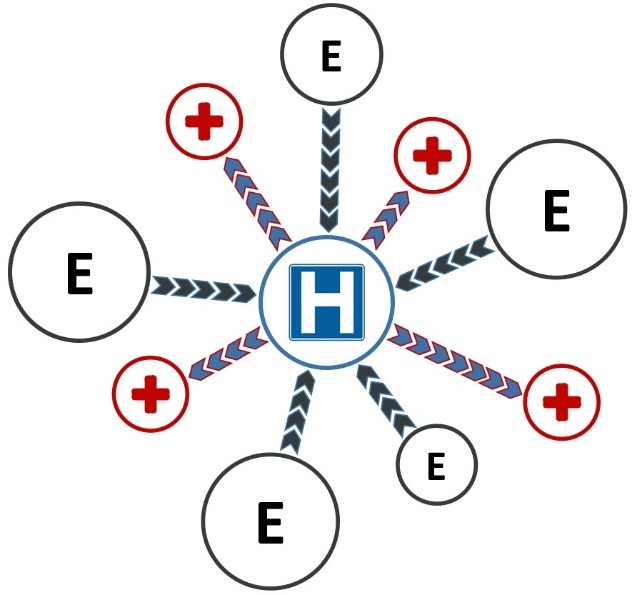3 waypoints on the rural health care journey
Trying to maintain status quo is becoming increasingly perilous for rural and community hospital leaders. Relentless attacks from aggressors have tested the endurance and resolve of even the staunchest among us. What could once be counted on for survival has been eroded if not completely destroyed.
Perhaps the real question is, “How far can you go?”
Often the answer lies in the experience of other rural and community hospital leaders who, in seeing status quo cannot endure, overcome inertia, embrace change, and set off on a journey to a better future.
Staying home with status quo
Traditionally, the stay-at-home employer maintains a fully insured employee benefits program and thinks about employee benefits for two months or less every year.
When renewal time comes and their broker presents a premium increase dictated by big insurance, they’re jolted into action. The scramble to assemble a less-costly plan begins, and they look for ways to pass cost onto employees or find a cheaper alternative. They somehow survive open enrolment and, after the smoke clears, settle in for another 10 months of living with a new status quo that’s just a little worse than the year before.
Waypoint 1: Leaving home in the right direction
After years of squeezing every nickel out of a traditional fully insured program, many rural and community hospital leaders have asked, “Where can I go from here?”
The most successful have chosen to head towards a distinct waypoint and acquired a strategic compass for navigating obstacles they encounter.
The most common choice: replacing a traditional fully insured program with an appropriate alternative funding strategy. The strategic compass is the belief that risk can be turned into an asset.
For proof that risk can be turned into an asset, consider how big insurance makes record profits year after year. Big insurance is able to reap enormous profits for two reasons. First, in a case of classic misdirection, they have created a risk avoidance culture. They tell us, “Risk is bad, it’s dangerous, it must be avoided at all costs, so let us do you a favor by taking it off your hands.”
The second reason: Big insurance knows risk is an extremely valuable asset when it is well managed.
But in order to effectively manage risk, you need information. You need to know where you are vulnerable, what it’s costing you, and most importantly, how to reduce or eliminate each area of vulnerability. When you are fully insured, the information you need to turn risk into an asset is profitably controlled by big insurance. The only way to gain control of the information you need is to claim ownership of your risk by implementing a self-funded employee benefits program.
Waypoint 2: Safety and strength in numbers
Once hospital leaders have arrived at the first waypoint and are self-funding their plan, they need to acquire insurance for those unexpected and infrequent but extremely expensive claims. Traditionally, they would buy this coverage from a stop-loss insurance provider. While the premiums paid are a fraction of a traditional fully insured plan, the relationship with the carrier is much the same.
An alternative more hospital leaders and employers are embracing is to become part owners of a risk and insurance captive. Captive is just a fancy word for company. It is used to distinguish between traditional insurance companies and smaller insurance companies owned privately by a group of similar business entities.

Here’s an example: By facilitating collaboration between a growing number of hospital leaders, NRHA, with the help of HealthSure, is making their journey easier and more rewarding through a national captive called the Community Hospital Insurance Coalition (CHIC).
CHIC is owned by participating hospitals, not by a profit-driven insurance company. And unlike other captives, CHIC goes well beyond providing financial protection from unexpected and infrequent but extremely expensive claims.
By actively sharing strategic advice and providing leadership support, CHIC members are securing their success and accelerating their progress in many ways. Here are just a few:
- Instead of reacting to big insurance demands, CHIC members are making employee health plan design and management decisions that better reflect and support their hospital’s business strategy.
- Wisdom sharing driven by pooled data intelligence is providing insight into better claims mitigation and avoidance, claims management, and cost-control strategies.
- Member employees are becoming better stewards of their health care dollars.
- Improved employee health care utilization, better cost control, and collective buying power are leading to annual cash reimbursements.
- Regional collaboration efforts are speeding CHIC members’ progress towards waypoint 3.
Waypoint 3: The custom network frontier
How far can you go?

A big idea is drawing the attention of rural hospital leaders who have reached waypoint 2. It is a logical next destination made possible by taking collaboration to a higher level – and, conceptually at least, it is a simple, two-part strategy.
One part is to collaborate to build a custom network of regional health care providers around your hospital. This can include other rural hospitals plus specialty clinics, med tech, and large, urban hospitals. The goal is to put your hospital (and the other rural facilities) in the middle of this network and serve as the primary care deliverer. Ideally, for every treatment and service you do not provide, you will have an alternative provider in your custom network.
The other part of this strategy is to offer major employers in your region preferred access to your custom network.
HealthSure has been collaborating with several hospital leaders to further develop the custom network strategy. It is exciting to see how far we can take it.
How far can you go?
Despite all of the challenges rural hospital leaders face, they discover, often to their great surprise, that they are able to do things they were at first afraid to try and thought impossible to achieve. Always remember there are established waypoints ahead. No matter how far you go, you can take comfort in knowing you will never go it alone.
This is an abridged version of an article recently published by HealthSure, which manages Rural Hospital Insurance of America, a collaborative risk and insurance program sponsored by NRHA. For the complete text of this article, visit www.healthsure.com/join-the-conversation.
